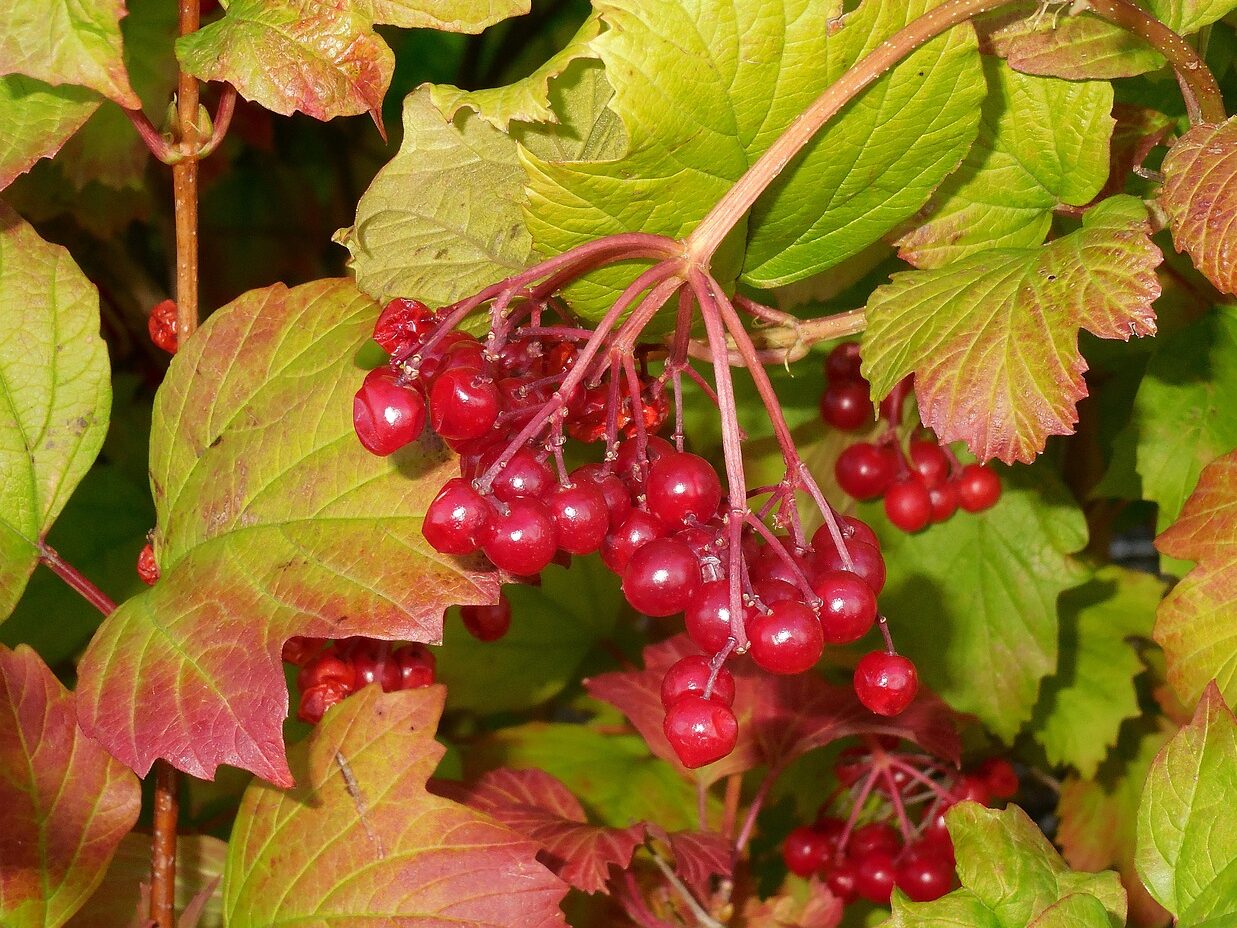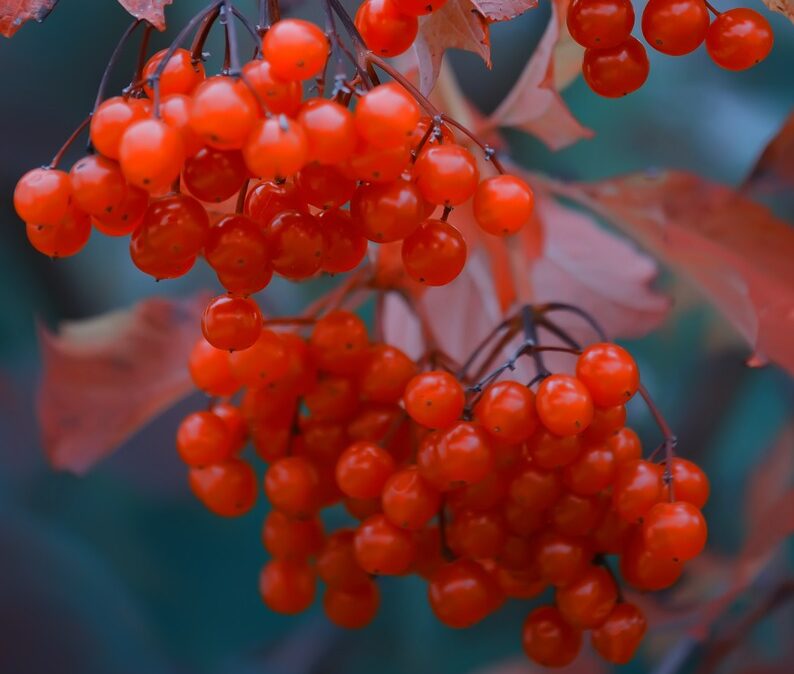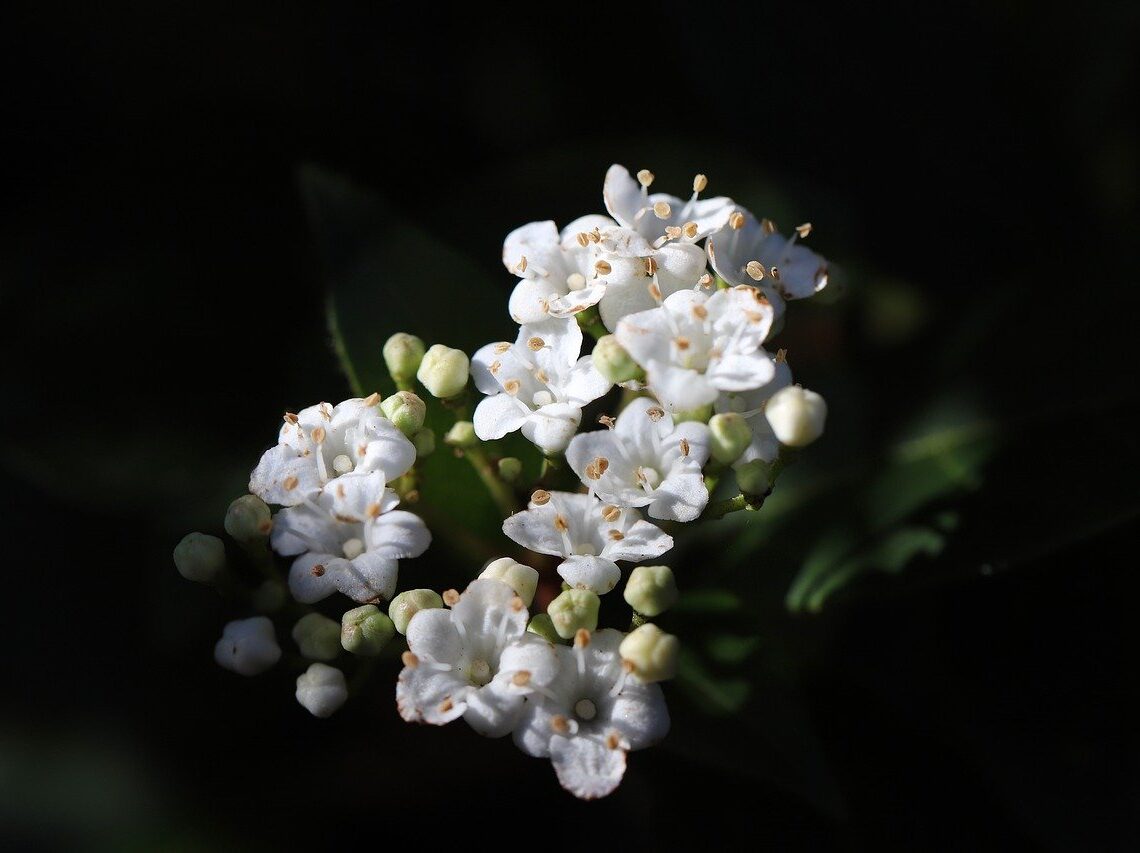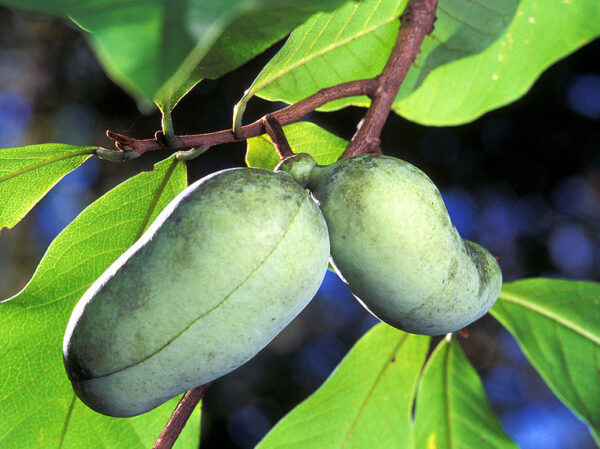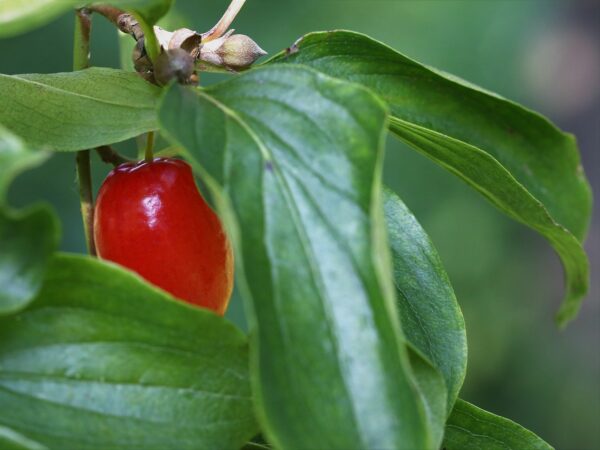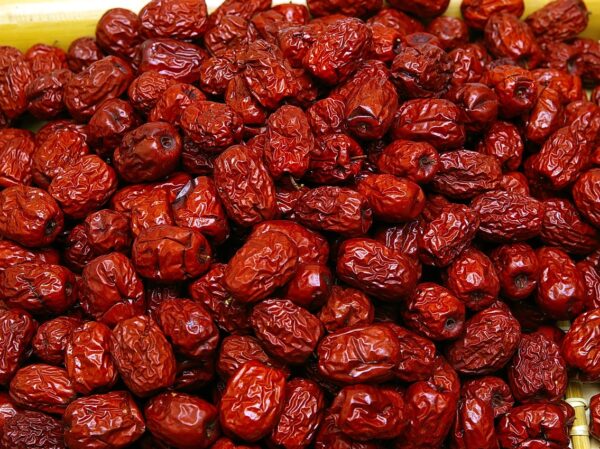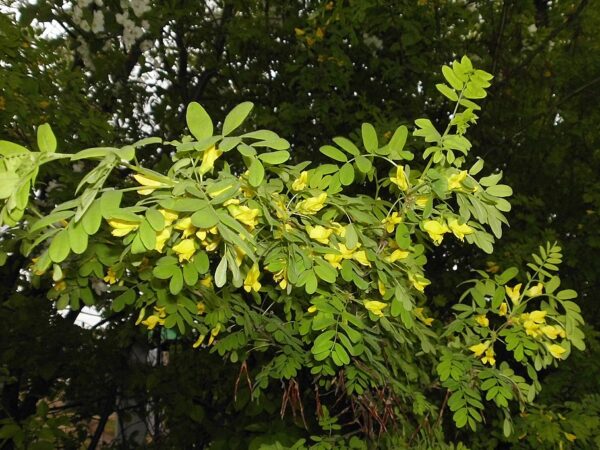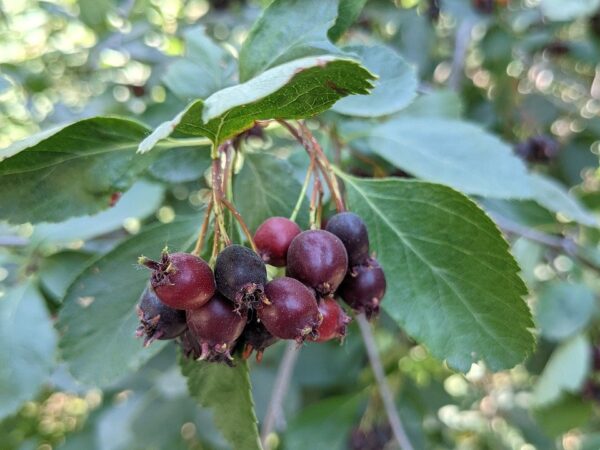Your cart is currently empty!
Additional Info
Plants for Surviving a Canadian Winter:
Edible Canadian Shrubberies:
Complicated Seed Dormancy and Germination: A Primer
Studies:
Genus Viburnum: Therapeutic Potentialities and Agro-Food-Pharma Applications
Description
Viburnum trilobum is a pretty solid cranberry replacement – they’re not so much for grazing as you go, as much as they are making jams, jellies, sauces, etc. Bonus points for being much higher up off the ground, easier to reach and easier on the back than bog cranberries. Also…no bog required. Lovely flowers and showy Autumn colour makes this shrub a good one that’ll bring you joy for years to come.
The technical bits –
It typically grows 2–4 metres tall and wide, forming a dense, rounded shape and prefers full sun to part shade. Viburnum trilobum tolerates a range of soils, including moist or poorly drained sites and is well-suited to temperate parts of New Zealand with regular watering during dry spells. It’s highly cold-tolerant, hardy down to –40°C.
This species is self-fertile to a degree, but cross-pollination between genetically distinct individuals improves fruit yield and quality. If growing from seed, plant at least three to five seedlings to ensure adequate genetic diversity and consistent cropping.
While it is known that Viburnum trilobum has a chilling hour requirement, it’s not actually clear what it is, so it may not be worth planting if you don’t get a defined winter.
Germination and Cold Stratification:
Seeds have a natural dormancy that takes time to overcome. They require a warm moist period (20-25°C) of about 90 days, followed by a cold moist stratification (1-5°C) for another 60 days. This mimics their natural cycle. Germination may occur in late spring of the second year.
I’ve come across a study that suggested that what we know as the seed is actually an outer coating and, if we remove that, wash it in fresh water 5 times, and then cold stratify it for 90 days you’ll get much better germination. I haven’t tried it, so I’m not suggesting you try this – just it may be worth it if you find you have a few spares. I’d link it here – but I had to Sci-Hub it, so that seems a little dodgy…
